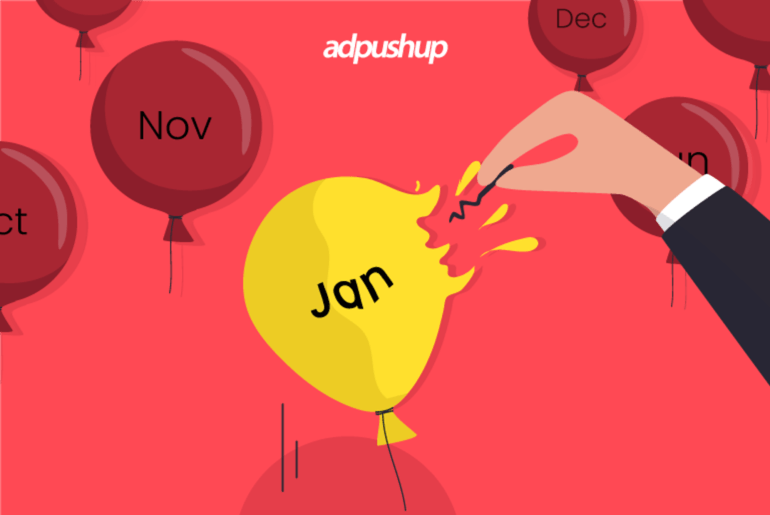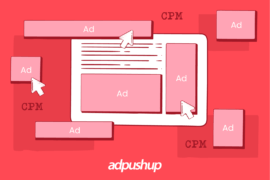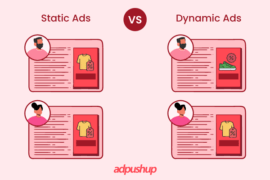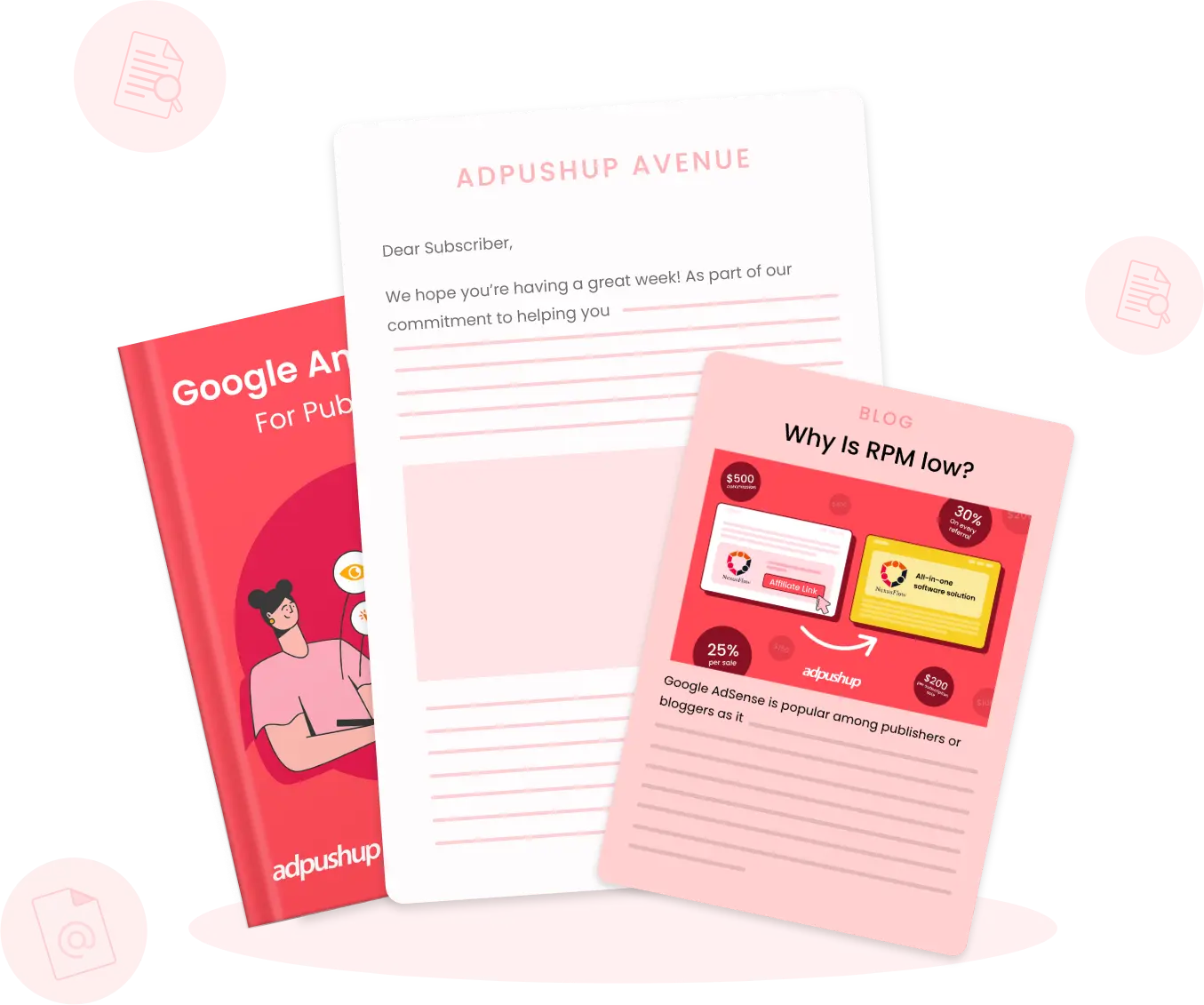Navigating the ad revenue dip in January can be a puzzle for publishers, but fear not! Our blog unveils 11 strategic moves that turn challenges into opportunities. Dive in for a captivating exploration.
After experiencing a fruitful festive season around November and December, publishers have to deal with the January revenue drop. In this month, publishers across the globe experience fluctuations in revenue, often on the downside.
Not only media publishers but video publishers (YouTubers) and eCommerce also experience the same. This makes January revenue drop (or January Slump), a common seasonality effect in ad tech.
Why Do all Publishers Experience the January Slump?
Yes. If compared to Q4 earnings, publishers see a significant decrease in their ad revenue.
Here is a graph showing ad revenue fluctuations:
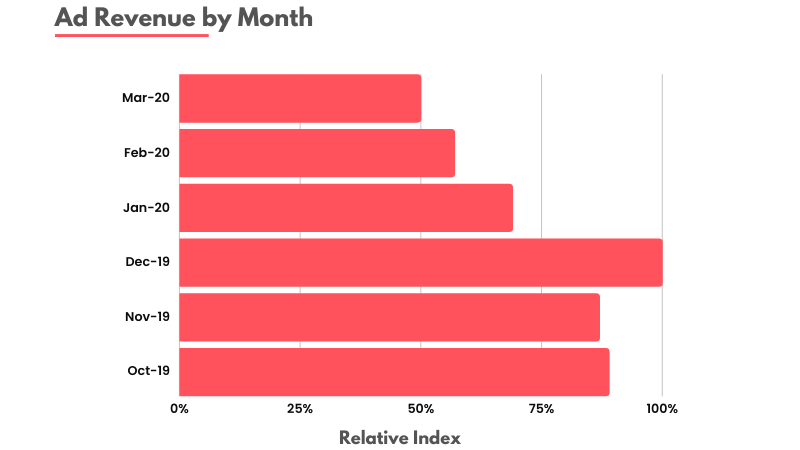
Notice the decrease in revenue in January?
We calculated this by evaluating the monthly eCPM of the publishers in our network based on the data collected from almost 4 billion ad impressions.
Here, the relative index shows the ratio of the average eCPM of each month from January onwards to December divided by the maximum eCPM for all 12 months times 100.
Relative Index = (Avg. eCPM / Max. eCPM) * 100
Using the relative index metric, you can see the change in monthly earnings of publishers, with respect to their maximum earnings, to get a better idea about a decrease in January revenue.
4 Most Common Reasons Behind the January Slump
While it could be difficult to pinpoint the exact reasons behind the January slump, here are the three major factors affecting ad revenue around this month:
1. Traffic Decline and Low Impressions
Towards the end of the holiday season—with Thanksgiving, Christmas, and New Year in a row—users’ browsing, online shopping, and gift-purchasing behaviors get back to normal.
This sudden change in browsing behavior results in a noticeable decrease in traffic. Consequently, the decrease in website traffic also takes a toll on the impression count.
Simply put, the advent of January puts an end to the festive season, thereby reducing the purchasing interest of users. If you have experienced the same, your Google Analytics account should show you the details of traffic changes.
2. Fall in Ad Fill Rate
Generally, publishers are recommended to increase their floor prices to improve earnings during the holiday season. However, towards the end of the holidays, publishers should also keep in mind to readjust the floor price of their ad inventory.
If floor prices are mishandled, it leads to a decrease in ad fill rate as inventory price might not seem justified to buyers.
This happens mainly because of the decrease in demand for ad inventory, as users are less engaged and, accordingly, buyers prefer to go easy on their advertising budgets (we’ll discuss this later in this post).
3. Decrease in CPM
Even if publishers slash down their floor prices after the holiday season, the ad revenue doesn’t necessarily show an upward trend. This is because of the CPM drop in January that happens during this seasonal effect.
A drop in the CPM rate cancels out most of the efforts made by publishers. No matter the improvements that are made to the inventory, chances are, the profits might not be the same as in Q4, with the market not offering the same CPM.
4. Impact of Advertiser’s Budget Allocation
With the start of a new year, advertisers and marketers also start by allocating new budgets for upcoming projects and tasks.
To make their budgets last longer, advertisers play cost-effective when it comes to advertising spending. It is important to note that a slight decline in an ad publisher’s revenue not just happens in January but in the starting month of any quarter.
In a nutshell, advertisers allocate a minimum budget in January, making it a low-earning month for publishers. They decrease the CPM rates on their campaigns, making publishers either sell their inventory at a lower price or show unfilled impressions.
Top 11 Strategies for Publishers to Overcome January Slump
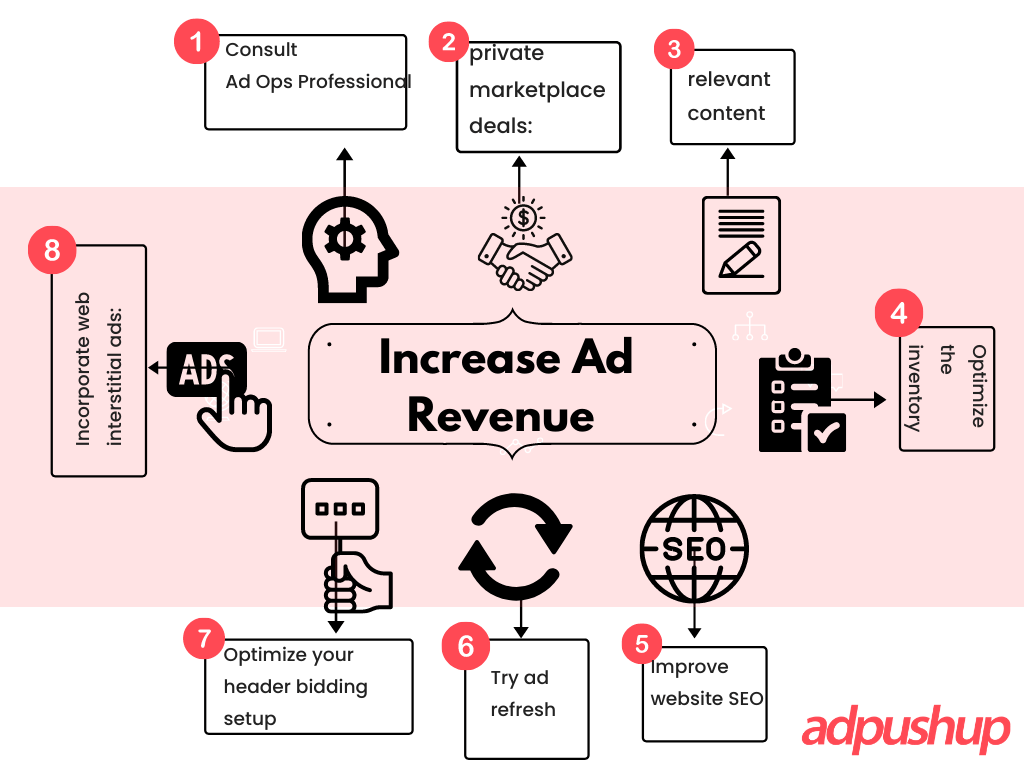
Ad revenue slump starts in January and shows a major impact in the starting weeks. The first suggestion for publishers should be to stop panicking.
A drop in ad revenue may seem scary at first. However, publishers should treat it as a seasonal trend that should resolve with time once the slump clears.
Meanwhile, here are measures publishers can take to avoid further damage to the revenue and generate more profit:
1. Try Setting a Lower Floor Price
As mentioned above, readjusting the floor prices can help you increase fill rates on your website. A high floor price must have given you ideal returns in December, but that may harm your inventory in January.
Most advertisers reduce the amount spent on ad campaigns. Therefore, by reducing floor prices, you can get an increased number of deals, avoid unfilled impressions, and stabilize your revenue drop.
2. Experiment with Private Marketplace (PMP) Deals
Automatic auctions are a boon for publishers without a doubt, but PMP deals can add significant value to your inventory.
With PMP deals, the whole process will become more transparent, and you will be able to invite advertisers who are actually interested in buying your inventory. This, in turn, will result in higher eCPM.
3. Continue With Relevant Content
Yes, there is a decrease in the traffic and fill rate. However, soon the traffic and revenue will start to stabilize. Hence, to keep your users engaged, you’d need to continue feeding them with relevant and quality content. This is needed to gradually increase and improve engagement and hence the ad revenue.
4. Optimize the Ad Inventory
Various advertisers use this time to come up with new strategies, and as a publisher, you can do the same.
Experiment with different ad placements and ad units on your websites so that you will know what works best. This can be of help for optimizing revenue in the following months as well.
5. Improve Website SEO
This includes content quality, website health, and keyword optimization. During the slump, you can’t afford to lose ranking keywords. As a practice, monitor your current rankings and introduce more keywords to your database to keep up with the search engines.
6. Optimize your Header Bidding Setup
Header bidding enables higher competition on publishers’ inventory. It helps them reach out to buyers across the globe and sell their inventory at a greater value.
Furthermore, publishers can also compete among different auctions, like running
open bidding and header bidding, to avoid unfilled impressions. It’s clear that header bidding has numerous advantages, but in order to take advantage of it, publishers should also focus on enhancing its performance.
Opting for managed services and using Prebid as a wrapper is a couple of solutions for doing the same. In addition to this, you can also choose to go for server-side header bidding to reduce latency on your website.
7. Try Ad Refresh
Ad refresh is a tricky solution. While it has been found that static inventory works better than reloading inventory, ad refresh can still be of help if users are spending a lot of time on your website.
However, before implementing it, you should consider user engagement. If you end up using ad refresh for websites where engagement is low, it can harm your revenue generation in the long run.
8. Incorporate Web Interstitial Ads
We have already stated that optimizing inventory is a good way to mitigate the damage caused due to the January slump. Adding web interstitials to your offerings can help you achieve the same.
These ad units were launched by Google recently and can increase your revenue significantly. You should consider best practices before implementing these ad formats to get better results.
9. Consult Ad Ops Professional
There can be a lot of moving factors in revenue optimization, like ad layout optimization, to understand while keeping up quality content and SEO. In such a case, publishers should consider ad ops experts for assistance. An ad ops expert will constantly monitor the website and improvise as per the coming demand, all for better monetization.
10. Explore Video Ads
The next preventive measure for the publishers to break through the January slump is employing video ads. In fact, according to a survey done by Wyzzowl, it has been found out that 91% of consumers want to see more video ads from brands. Moreover, In the US, spending on video ads will rise steadily over the next five years, adding a whopping $35.8 billion (or 46.5%) to the market.
Thus, we suggest adding more video units to the ad requests. Doing so can help you increase the number of ad bids. Plenty of video types are available for publishers in terms of programmatic video advertising. Here are a few of them:
11. Optimize Page Load Speed
Another way to seamlessly navigate through the January slump is improving your site performance. For that, you need to optimize your page load speed, which enriches user experience and promotes content engagement.
Quicker loading times not only enhance user satisfaction but also boost the chances of visitors interacting with your content. A faster, more responsive site can contribute to improved SEO rankings and increased visitor retention rates.
Furthermore, prioritizing speed optimization is crucial in a mobile-first environment, where sluggish loading can greatly affect the experience of mobile users and the overall effectiveness of your site in reaching a diverse audience.
Final Thoughts
January slump is a completely normal pattern, and it would be best for publishers not to worry about it too much. We advise publishers to use this time of the year to experiment with innovative solutions and come up with new strategies. This will help them to get improved results in the long run.
For the time being, however, you should focus on the tips provided above to make sure that you get as many returns as possible.
Looking to manage ad revenue drops? Let’s get in touch with our experts!
Frequently Asked Questions
Ad revenue is low in January due to various reasons such as a fall in the ad rates, declined traffic, lower CPMs, and a lot more. It’s essential to recognize and navigate these dynamics strategically to mitigate the impact of the January ad revenue decline.
CPM tends to dip in January as advertisers heavily spend their ad budget during the Christmas season. They often pause or reduce their campaigns to manage budgets more efficiently. This move is aimed at curbing spending during a month when consumer engagement typically decreases, impacting publishers who experience a decline in CPM during this period.

Deepak has a keen eye for detail and a deep understanding of the ad tech landscape. Whether it’s through in-depth articles, thought-provoking insights, or compelling storytelling, he’s dedicated to helping people navigate the complex world of ad tech with the simplicity of his words.
